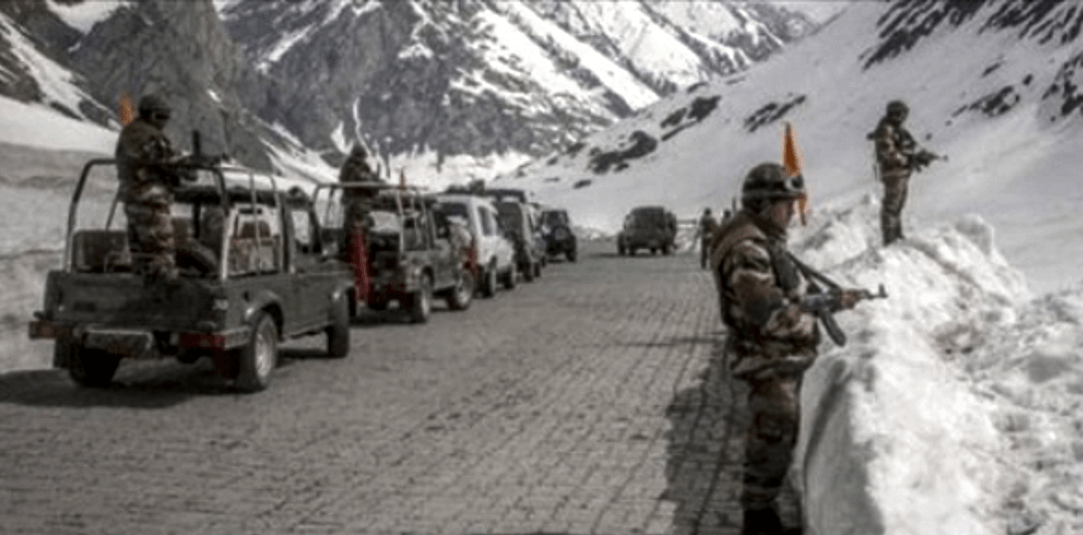India and China Must Resolve the Ladakh LAC Standoff by Diplomatic Means

THE clash between the Indian and Chinese troops in the Galwan valley area along the Line of Actual Control (LAC) in the Ladakh sector marks a new flashpoint of friction between the two neighbours. It is the first major case of border skirmish between India and China since 1975, and given the growing scale of casualties on both sides it is the worst since the Nathu La and Cho La clashes on September 11-14 and October 1, 1967, along the Sikkim border.
The Ladakh LAC stand-off between the two sides has been known for several weeks now. Videos of heated exchanges between soldiers of the two sides on the ground have been viral on the internet. Defence analysts have been reporting about Chinese incursion on the Indian side of the LAC with India losing control over an area of sixty square kilometres in the Galwan valley. But officially, the Modi government never acknowledged any of these reports, instead maintaining that de-escalation talks were underway and the situation was under control.
Initial statements by Indian Army on 16 June acknowledged three deaths – Col Santosh Babu, Havildar K Palani and sepoy Kundan Ojha. Subsequently we were told about the death toll having reached twenty, with 17 of the critically injured succumbing to death in sub-zero temperature. Weeks of denial thus suddenly turned into the shocking admission of as many as twenty deaths. China has not yet confirmed the number of casualties on the Chinese side. And we too still do not officially know more about Indian soldiers, those who are injured and receiving treatment and if any of Indian soldiers are being held captive by the Chinese side.
The quiet and evasive response of the Modi government to the current round of LAC stand-off with China stands in sharp contrast to its loud criticism of what the BJP in opposition used to describe as the Manmohan Singh government’s weak foreign policy. It also marks a glaring contrast to the Modi government’s vocal rhetoric and posturing against Pakistan during the Pulwama-Balakot episodes just before the 2019 Lok Sabha elections. Coupled with India’s worsening relations with virtually all SAARC countries – from Afghanistan and Pakistan, to Nepal, Bangladesh and Sri Lanka – the stand-off with China clearly marks a major foreign policy crisis for the Modi government.
A flare-up between China and India is always a dangerous proposition for both countries. What makes it especially ominous for India is the current situation of Covid19 epidemic and the massive economic recession. The perspective is too stark to miss. The news of the loss of twenty Indian soldiers was accompanied by reports of the biggest single day spike in India’s Covid19 death toll, with more than two thousand deaths being recorded on one single day. June 16 was indeed India’s Terrible Tuesday.
The stand-off must be resolved through serious diplomatic efforts between the two governments. Of all India’s Prime Ministers, Narendra Modi has visited China most often, five times as PM and earlier four times as Gujarat CM. He has taken every opportunity to display his personal bonhomie with his Chinese counterpart Xi Jinping. The mutual economic stakes between the two countries are also quite high, with China being India’s biggest trading partner. Rather than echoing the Trump doctrine on China on Covid19 or whipping up an anti-China hysteria by calling for boycott of Chinese goods, the test of India’s foreign policy lies in securing a quick and honourable diplomatic solution with China. In 2014 Modi had come to power with promises of rapid economic development, but during the Modi years the economy has been going steadily downhill. In 2019, the Modi campaign revolved around his so-called image as a ‘global leader’. The Ladakh standoff marks Modi’s biggest foreign policy test beyond the showy spectacles of ‘Howdy Modi’ and ‘Namaste Trump’.
Charu Bhawan, U-90, Shakarpur, Delhi 110092
Phone: +91-11-42785864 | +91 9717274961 E-mail: info@cpiml.org

